Abstract
1 Peptide 401, a potent mast cell degranulating factor from bee venom, substantially inhibited the oedema provoked by subplantar injection of carrageenin or intra-articular injection of turpentine in the rat. The ED50 of 401 was c. 0.1 mg/kg. The anti-inflammatory effect was assessed by measurement of the increased 125I-albumin content of an injected site in comparison with an uninjected contralateral site.
2 Peptide 401 also suppressed the increased vascular permeability due to intradermal injection of various smooth muscle spasmogens (histamine, bradykinin, 5-hydroxytryptamine (5-HT), and prostaglandins).
3 Other comparable mast cell degranulating agents (48/80 and melittin) showed little evidence of anti-inflammatory activity when tested at comparable dosage on turpentine arthritis and carrageenin oedema.
4 The anti-inflammatory effects were not abolished by pretreatment with mepyramine and methysergide, which abolished the increased vascular permeability produced by local injection of 401.
5 The anti-inflammatory action of 401 was not affected by regional denervation or pretreatment with phenoxybenzamine, and was reduced but not abolished by adrenalectomy.
6 Measurement of skin temperature, fractional extraction of 86Rb and blood flow in perfused mesentery gave no evidence that the anti-inflammatory action of 401 was due to reduced tissue perfusion.
7 It is concluded that 401 may exert its anti-inflammatory action directly by making the vascular endothelium anergic to phlogistic stimuli.
Full text
PDF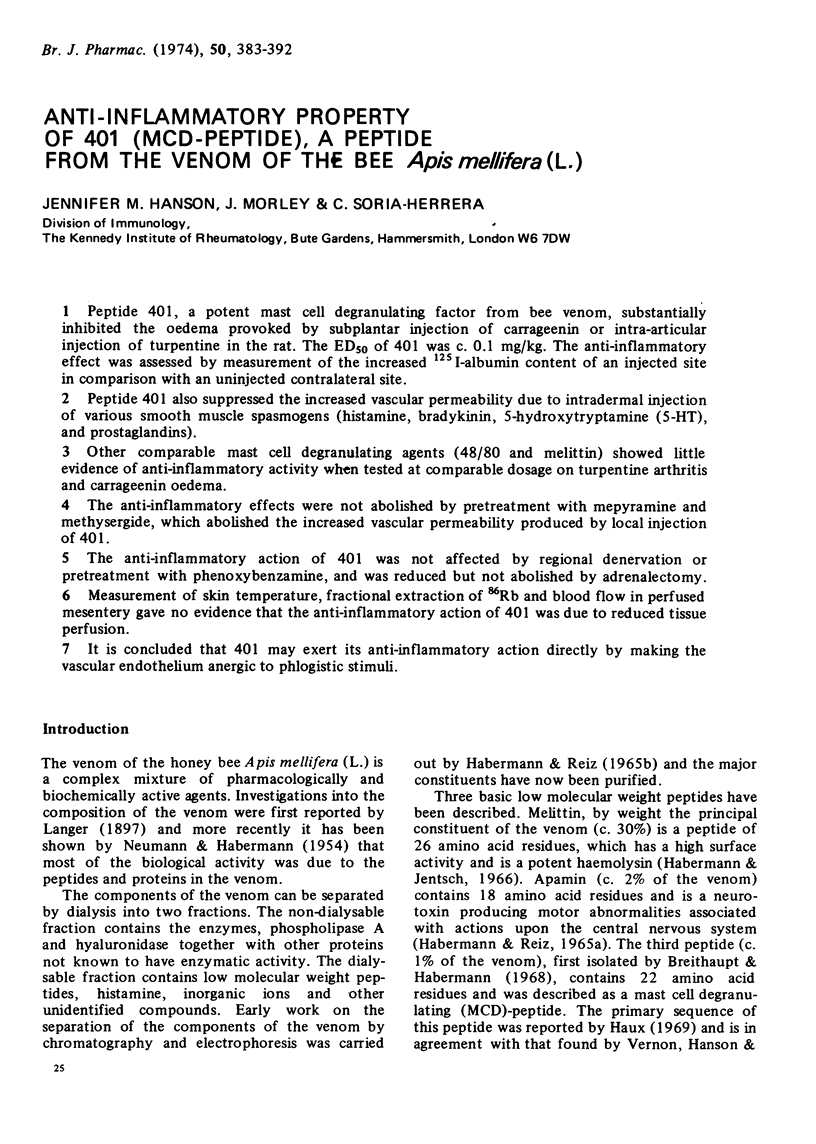
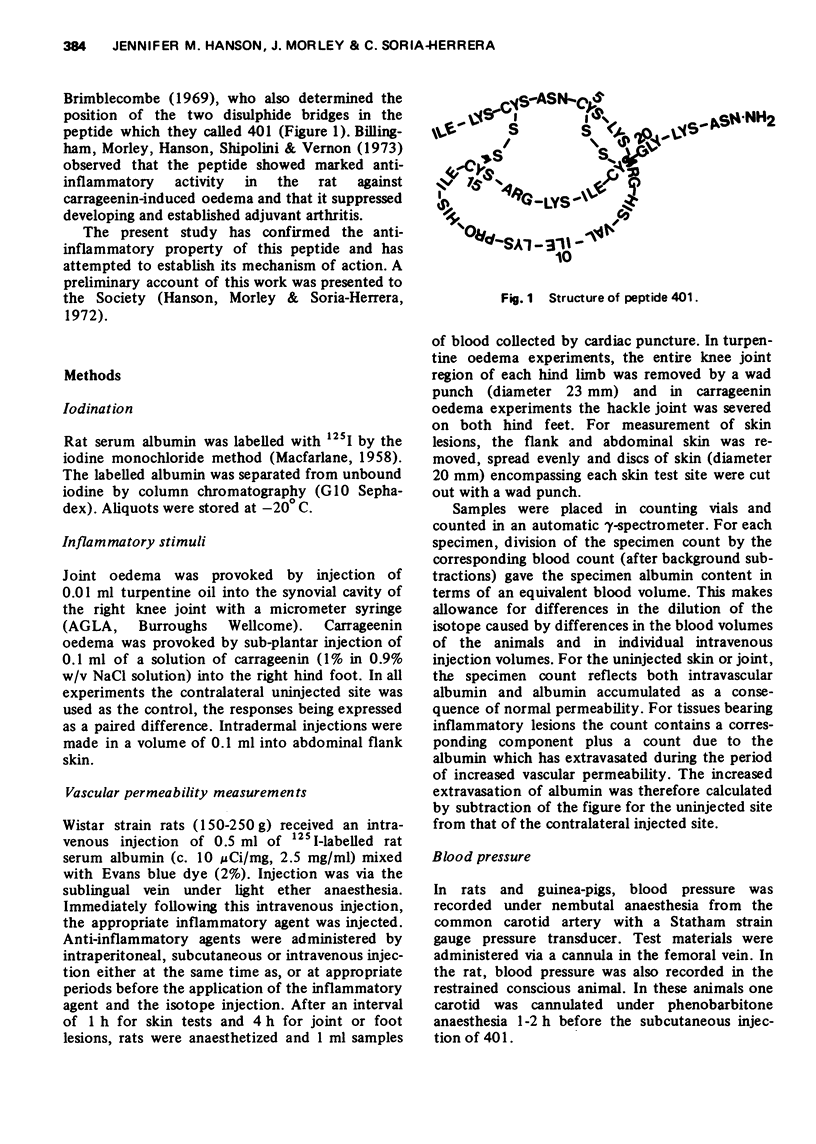
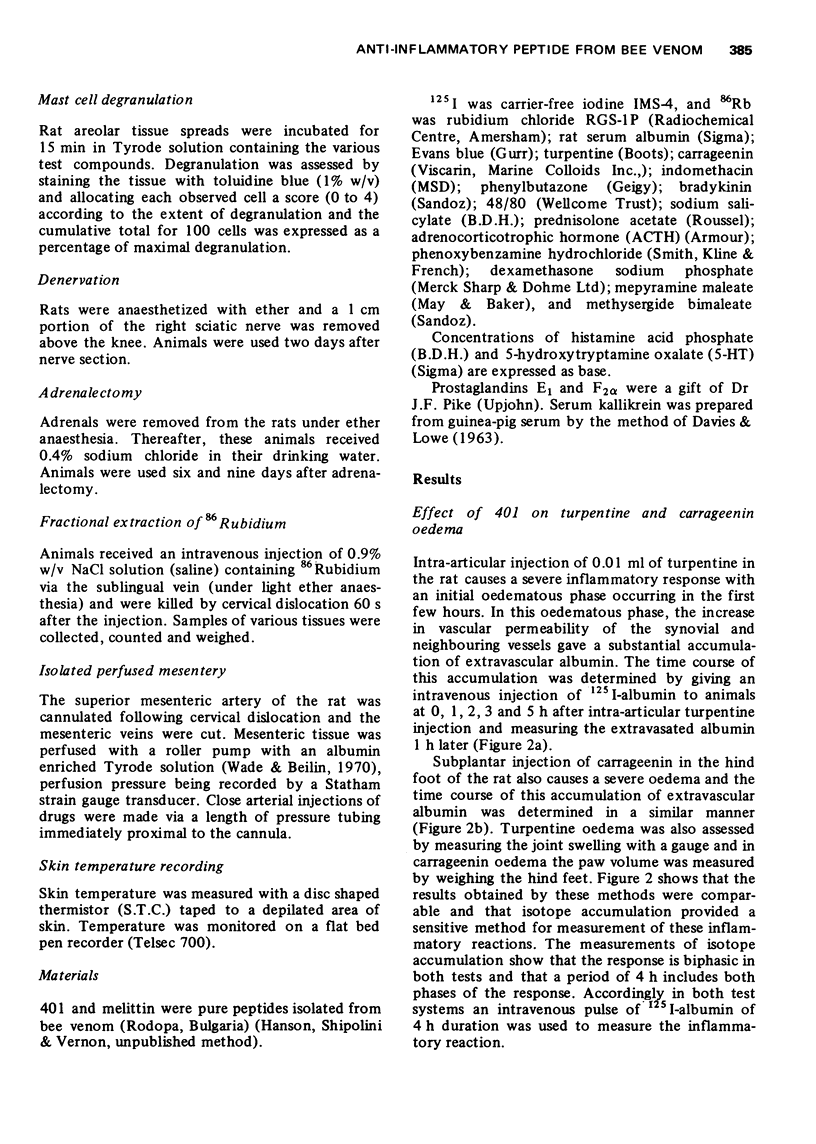
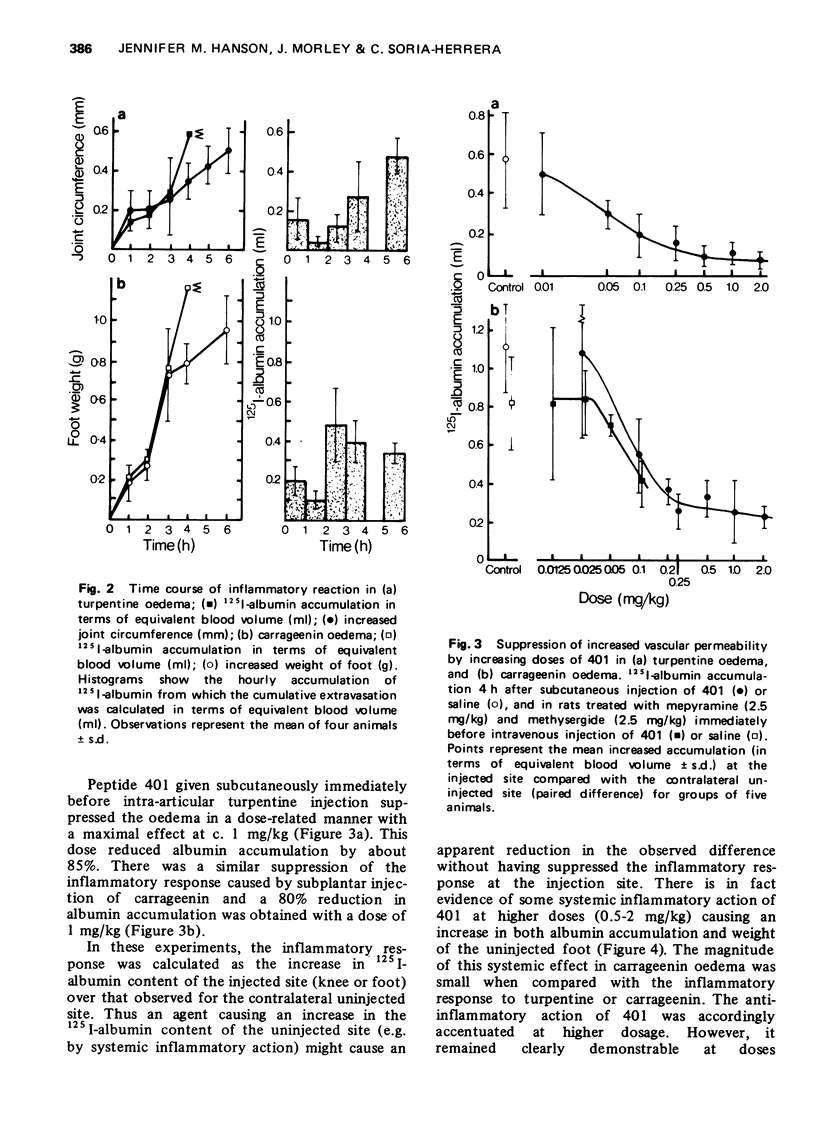
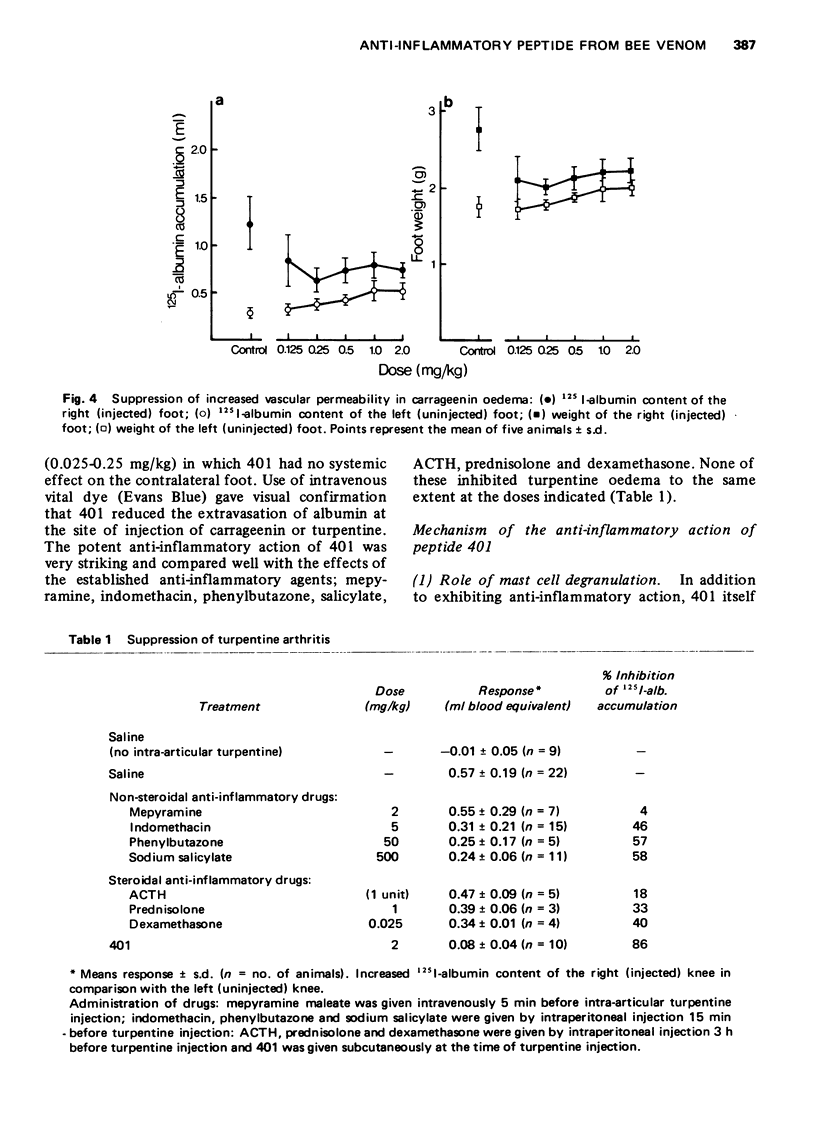
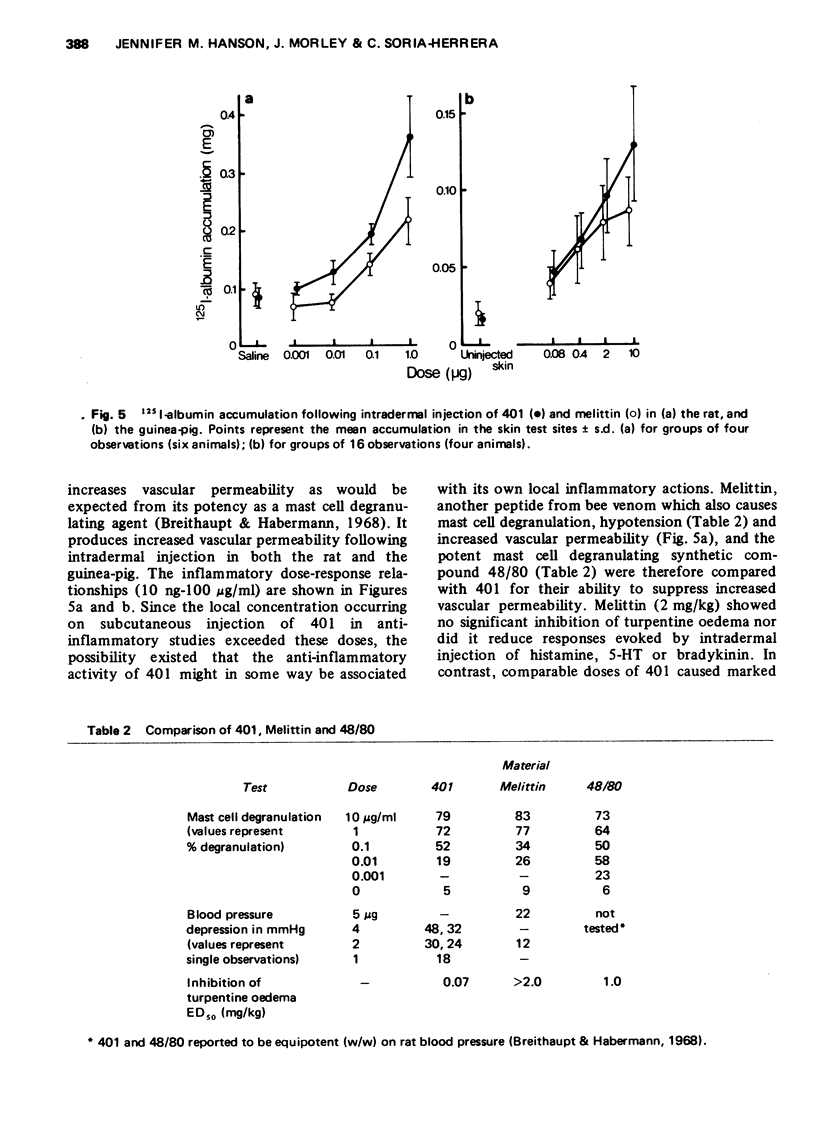
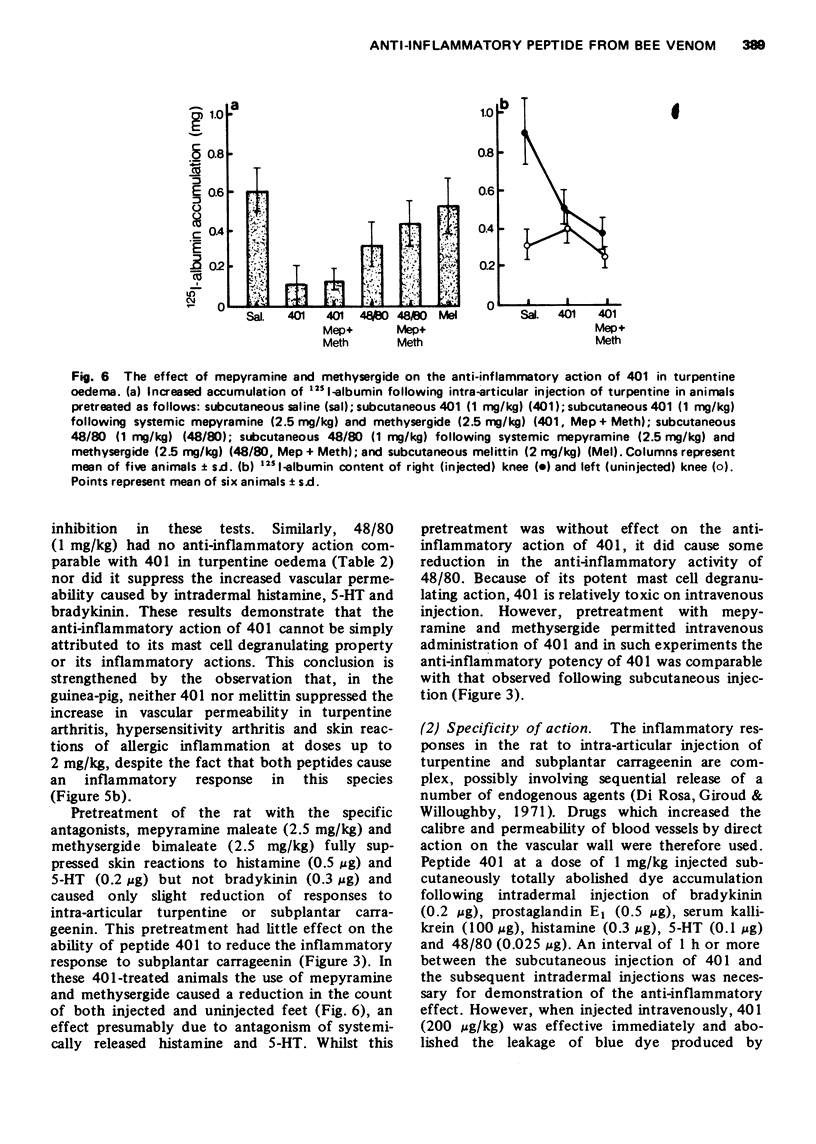
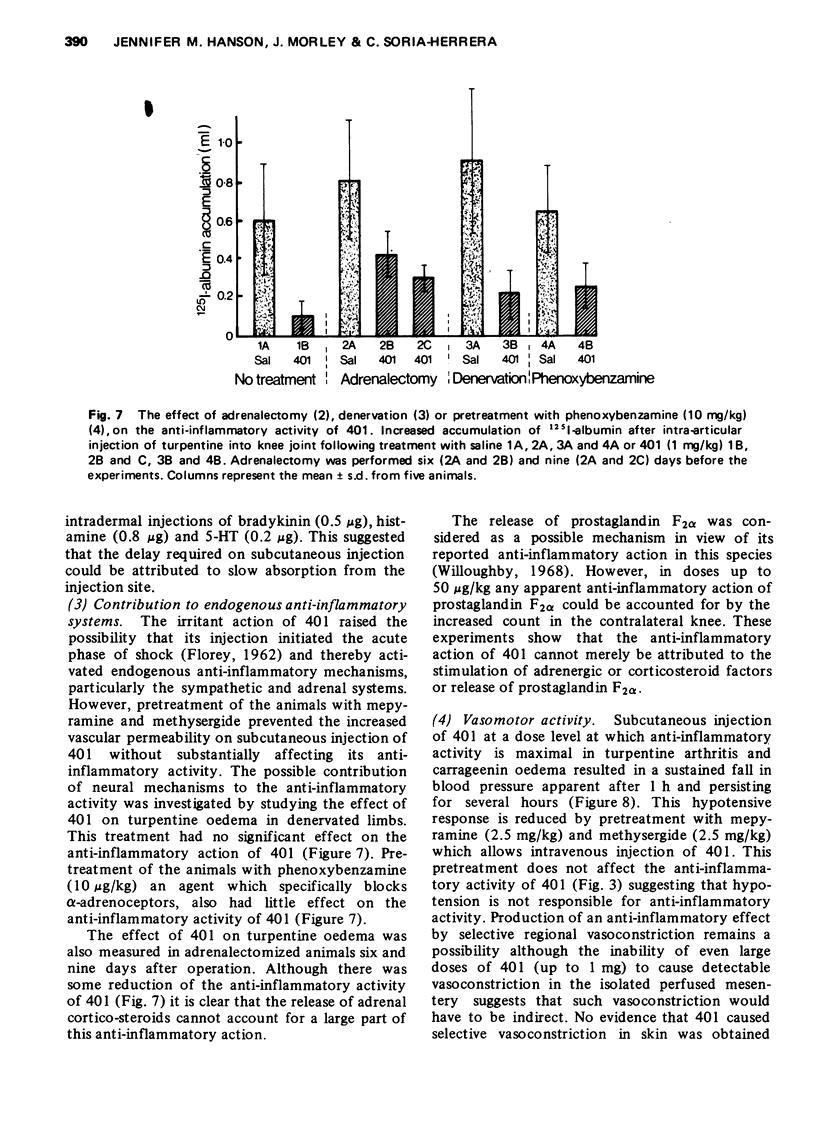
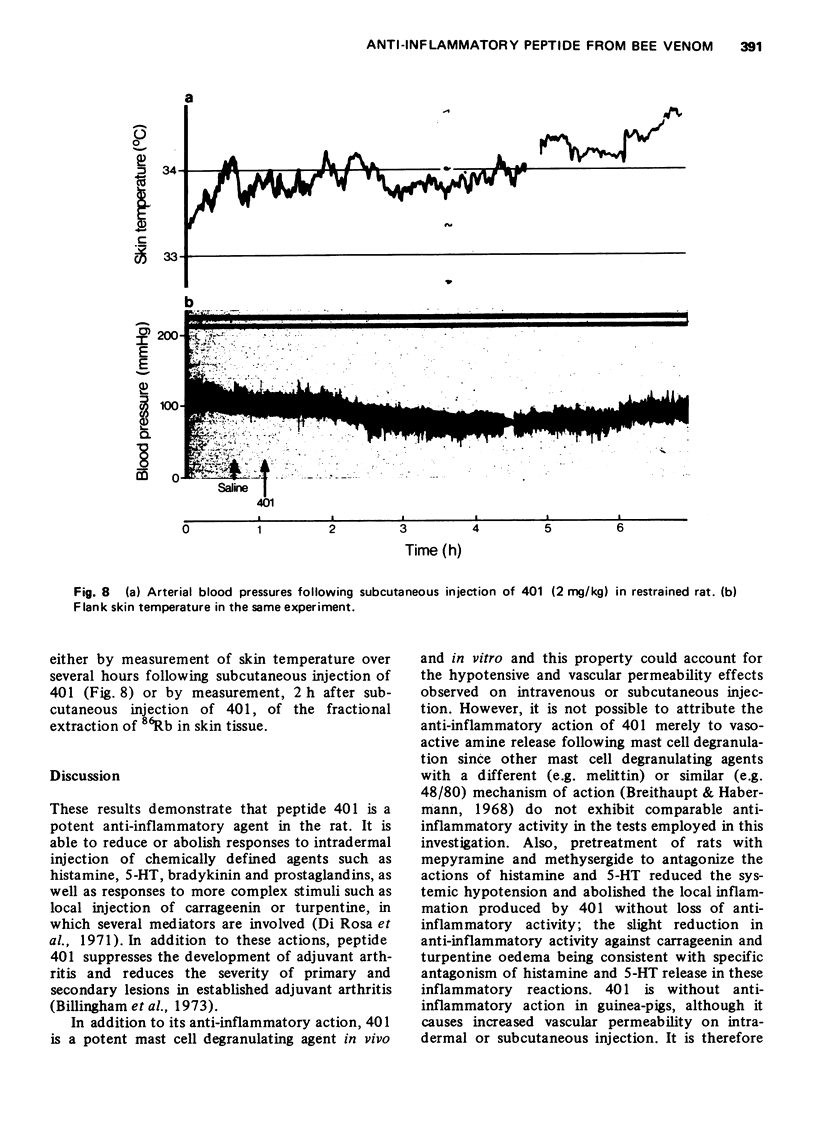
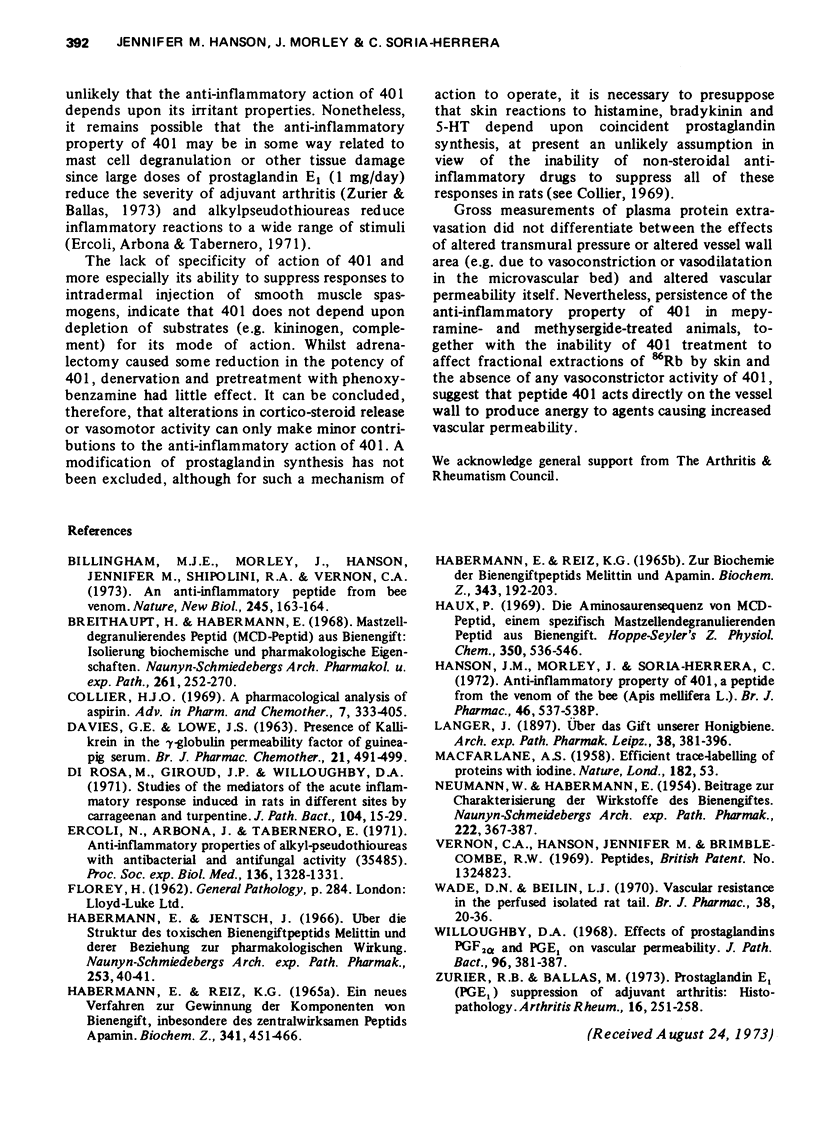
Selected References
These references are in PubMed. This may not be the complete list of references from this article.
- Billingham M. E., Morley J., Hanson J. M., Shipolini R. A., Vernon C. A. Letter: An anti-inflammatory peptide from bee venom. Nature. 1973 Sep 21;245(5421):163–164. doi: 10.1038/245163a0. [DOI] [PubMed] [Google Scholar]
- Breithaupt H., Habermann E. Mastzelldegranulierendes Peptid (MCD-Pepid) aus Bienengift: Isolierung, biochemische und pharmakologische Eigenschaften. Naunyn Schmiedebergs Arch Exp Pathol Pharmakol. 1968;261(3):252–270. [PubMed] [Google Scholar]
- DAVIES G. E., LOWE J. S. PRESENCE OF KALLIKREIN IN THE GAMMA-GLOBULIN PERMEABILITY FACTOR OF GUINEA-PIG SERUM. Br J Pharmacol Chemother. 1963 Dec;21:491–499. doi: 10.1111/j.1476-5381.1963.tb02017.x. [DOI] [PMC free article] [PubMed] [Google Scholar]
- Di Rosa M., Giroud J. P., Willoughby D. A. Studies on the mediators of the acute inflammatory response induced in rats in different sites by carrageenan and turpentine. J Pathol. 1971 May;104(1):15–29. doi: 10.1002/path.1711040103. [DOI] [PubMed] [Google Scholar]
- Ercoli N., Arbona J., Tabernero E. Anti-inflammatory properties of alkyl-pseudothioureas with antibacterial and antifungal activity. Proc Soc Exp Biol Med. 1971 Apr;136(4):1328–1331. doi: 10.3181/00379727-136-35485. [DOI] [PubMed] [Google Scholar]
- Habermann E., Reiz K. G. Zur Biochemie der Bienengiftpeptide Melittin und Apamin. Biochem Z. 1965 Nov 15;343(2):192–203. [PubMed] [Google Scholar]
- Haux P. Die Aminosäurensequenz von MCD-Peptid, einem spezifisch Mastzellen-degranulierenden Peptid aus Bienengift. Hoppe Seylers Z Physiol Chem. 1969 May;350(5):536–546. [PubMed] [Google Scholar]
- Wade D. N., Beilin L. J. Vascular resistance in the perfused isolated rat tail. Br J Pharmacol. 1970 Jan;38(1):20–36. doi: 10.1111/j.1476-5381.1970.tb10333.x. [DOI] [PMC free article] [PubMed] [Google Scholar]
- Willoughby D. A. Effects of prostaglandins PGF2a and PGE1 on vascular permeability. J Pathol Bacteriol. 1968 Oct;96(2):381–387. doi: 10.1002/path.1700960216. [DOI] [PubMed] [Google Scholar]
- Zurier R. B., Ballas M. Prostaglandin E 1 (PGE 1 ) suppression of adjuvant arthritis. Histopathology. Arthritis Rheum. 1973 Mar-Apr;16(2):251–257. doi: 10.1002/art.1780160218. [DOI] [PubMed] [Google Scholar]


